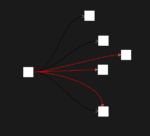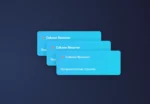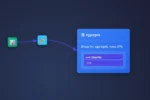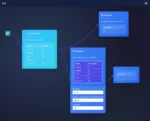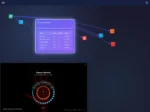
by tyler garrett | Jun 18, 2025 | Data Processing
Managing complex data systems requires a robust mechanism not only for current operations but to restore historical states quickly and elegantly. Businesses consistently demand reliability in data management, analytics accuracy, and seamless innovation adoption. One integral software solution that makes state preservation and recovery manageable and efficient is known as the Memento Pattern. As trusted technical strategists specializing in data, analytics, and innovation, we emphasize the strategic advantage of leveraging well-established design patterns to enhance your software’s resilience and maintainability. Let’s delve deeper into how using the Memento pattern can safeguard your digital assets, accelerate troubleshooting processes, and amplify your business agility.
Understanding The Basics: What Is the Memento Pattern?
The Memento pattern, a behavioral software design approach categorized by the renowned “Gang of Four,” provides a mechanism to capture and externalize an object’s internal state without violating encapsulation. This pattern allows restoring the state later, making it particularly useful in scenarios involving undo operations, audit trails, or stateful workflows. Imagine taking reliable snapshots of your software objects’ states at critical points in service flows. Whenever needed—be it due to error recovery, user-initiated undo, or precise auditing—you have the flexibility to revert precisely to a previous state, ensuring operational continuity and data fidelity.
In the data analytics and data pipelines space where we at Dev3lop continually guide and advise our clients, state management proves vital. Accurate implementation of the Memento pattern acts as an insurance policy against unexpected errors or unintended changes, thereby increasing both uptime and robust data integrity—cornerstones behind successful analytics programs and transformations. Consider scenarios such as data cleansing processes or complex data transformation journeys, where reverting a processing pipeline step quickly ensures continual business delivery. The inventive use of patterns like these readily complements advanced techniques such as workflow-integrated data quality validation gates ensuring system accuracy remains continually assured.
Core Components of the Memento Pattern
Three distinct actors power the elegant architecture of the Memento pattern: the Originator, the Memento, and the Caretaker. The Originator creates snapshots of its own state, encapsulating these snapshots into a structured object known as the Memento. The Originator later can restore its state using the previously created Memento instances. Safeguarded from direct state manipulation or exposure, this design naturally aligns with principles of encapsulation—a necessary foundation toward scalable software architecture.
The Caretaker serves as a gatekeeper and manager of the Originator’s snapshots. It stores the Memento objects securely and transparently without ever directly accessing or editing their internal content—a critical trait that maintains integrity. From a decision-making perspective, this means your data governance remains strong, and you can easily align your architecture to satisfy data retention policies and technical implementation guidelines, ensuring compliance and robust audit-readiness.
Structurally, this pattern thus empowers architects, innovation champions, and data-driven organizations to maintain high-quality data transactions and transformation workflows. Integrating the Memento pattern strategically equips your systems architecture with tools to swiftly manage historical data states, complementing enterprise innovation workflows with prudence and precision.
Practical Advantages in Data-Intensive Scenarios
In complex enterprise environments dealing with extensive data workflows, analytics-driven decisions rely heavily upon accurate historical state management. For scenarios such as accurate demand prediction models where past data states must be replayed or reverted efficiently for scenario simulations, the Memento pattern provides ideal practical benefits.
By using Memento snapshots, analytics solutions can quickly pinpoint previously validated states to reproduce results accurately—critically essential in highly regulated sectors. Parallelly, when handling extensive data consistency checks or API versioning as discussed in our article on data catalog API design for programmatic metadata access, incorporating Memento facilitates precise version control and transparent system restorability.
This elegant mechanism performing automatic state recovery aligns harmoniously with data transformation best practices such as functional programming paradigms in transformation logic. Having a reliable historical rollback encourages confident iterative development, allowing data science teams and engineers to experiment robustly, validate models on historical sets, and rapidly restore consistent states whenever unforeseen data anomalies are encountered.
Memento Pattern’s Role Within Modern AI and ML Pipelines
Artificial intelligence and machine learning increasingly dominate today’s data innovation landscape, significantly altering how businesses address data complexity. Our article examining AI and ML’s revolutionary impact on the data industry underscores a crucial theme—efficient data management. As machine learning pipelines become complex entwined systems with numerous stateful operations, the value of snapshots for restorations significantly multiplies.
The Memento pattern shines in machine learning processes, particularly when maintaining reliable checkpoints within data pipelines, experiments, and model-training stages. Using snapshots strategically to manage model-training states can significantly help protect organization investments in costly datasets or computational efforts. Not only does this decrease resource waste, but it fortifies disaster recovery provisions during iterative experimentation and agile analytics exploration.
Alongside advanced analytics scenarios, such as employing HyperLogLog counters for cardinality estimation in near-real-time data ingestions, Memento enhances experimental confidence. Decision-makers relying upon cutting-edge machine learning models continuously integrate stateful pipeline checkpoints, safeguarding data scientists’ efforts and eliminating losses from incidental mishaps.
Memento In Action: A PostgreSQL Case Study
Consider real-world data management scenarios involving sophisticated databases like PostgreSQL. In demanding environments, companies often rely on PostgreSQL’s powerful transactional features combined with advanced analytical capabilities. A thoughtfully implemented Memento Pattern integration increases database value by simplifying rollback management automation and ensuring seamless state restoration when unexpected incidents or operational errors occur.
Database administrators or analysts could invoke tailored Memento-pattern implementations on data sets performing analytics-intensive transformations. Such an approach helps complement modern data system transformations—adding a layer of safety during schema migrations, bulk data updates, or minute business rule adjustments that demand quick rollbacks.
Effectively integrating Memento with PostgreSQL state management not only streamlines transaction-level checkpointing but also complements existing database architectures with advanced techniques, supporting integrity, auditing precision, and speedily maintaining resiliency when addressing unforeseen data issues or application-level malfunctions.
Storytelling and Communication: You and Your Memento Snapshots
At Dev3lop, part of our holistic approach includes effectively communicating data-driven insights. In our comprehensive guide on data storytelling, we explain the critical role historical comparability and consistent snapshots play when creating visual storytelling narratives. Utilizing the Memento Pattern provides researchers, engineers, and business analysts interactive means for narrative storytelling—restoring specific workflow states to compare scenarios visually and address stakeholder questions accurately and succinctly.
By readily restoring historical snapshots aligned precisely to prior data visualization snapshots or reporting dimensions, the Memento pattern empowers analysts to build rich narratives anchored consistently in trustworthy historical contexts. This consistency profoundly elevates strategic data storytelling, enabling decision-makers to rapidly comprehend scenarios, confidently make iterative changes, and clearly communicate transformations and results across teams.
Unlocking Your Potential Through Strategic Memento Implementation
Embracing the Memento pattern expands your technical arsenal to manage business-critical states explicitly, safeguard your data-intensive processes, and cultivate innovation agility. Empower your strategic data initiatives by leveraging trusted architectural paradigms intelligently, allowing you to focus confidently on core business operations—ushering in an era of sustainable growth and reliable digital scalability.
Dev3lop remains dedicated to guiding businesses strategically through complex challenges in data management, analytics, AI, and storytelling—driven by informed innovation. The Memento pattern and other robust design approaches serve as powerful tools to control data risk and unlock strategic growth initiatives confidently.

by tyler garrett | Jun 18, 2025 | Data Processing
In today’s rapidly growing data landscape, understanding the scale and uniqueness of your data points can often feel like counting the stars in the night sky—seemingly endless, complex, and resource-intensive. Businesses navigating petabytes of diverse data cannot afford inefficient methods of data analysis and need rapid insights to maintain competitive edge. Enter cardinality estimation—a powerful technique that provides decision-makers quick, reliable approximations of unique data values without exhaustive computation. As experts in innovative data technologies, we at Dev3lop specialize in empowering businesses to leverage advanced analytical methods like cardinality estimation to enhance data-driven strategies. Let’s dive deeper into the intricacies of cardinality estimation and its beneficial applications for effective decision-making.
Understanding Cardinality Estimation and Its Importance
In data analytics and data management, cardinality refers to the number of unique elements in a dataset. Accurately counting unique occurrences is crucial in numerous data-driven use cases, such as crop yield prediction analysis, customer segment analysis, and network security monitoring. Traditionally, exact counts of unique items—also known as distinct counts—were feasible when datasets were small and computations relatively straightforward. However, with today’s vast and continuously streaming data, achieving exact counts becomes computationally expensive and time-consuming.
Cardinality estimation techniques allow us to obtain sufficiently accurate approximations of distinct values with significantly lower resources, improving both the speed and scale of processing large datasets. The estimation algorithms markedly enhance real-time analytics capabilities where immediate insights are paramount—such as fraud detection, security event management, and online customer engagement metrics. By understanding the strategic importance of cardinality estimation, stakeholders gain clearer perspective for data-driven strategies and agile business decisions.
Effective understanding and implementation of these estimation techniques help organizations streamline their data processing pipelines, creating measurable efficiencies across the data lifecycle. As our clients often recognize through our AI agent consulting services, improvements in cardinality estimation accuracy directly translate into better data management practices, faster decisions, and optimized costs.
The Algorithms Behind Cardinality Estimation
HyperLogLog Algorithm
Among advanced cardinality estimation techniques, HyperLogLog (HLL) is prominently utilized. Developed to efficiently approximate distinct counts within large-scale datasets, HLL uses sophisticated probabilistic methods leveraging hashing functions to represent data in extremely compact, memory-efficient structures. With predictable accuracy and confidence intervals, HyperLogLog provides remarkably precise cardinality estimations, enabling confident decision-making even when exact numbers prove resource-intensive.
The visual representation and clearer comprehension of data distribution methods like the violin plot visualization may complement HyperLogLog-based insight, as it clearly showcases distribution aspects that contribute directly to analytical accuracy and deeper insights into data distributions. Compared to simpler estimation methods, HLL algorithms are notable in handling large streaming datasets, with unique advantages in scalability, accuracy, and minimal computational overhead.
Linear Counting Algorithm
Linear Counting is another established algorithm used for cardinality estimation, suitable particularly for datasets with low to moderate cardinalities. It achieves estimations by leveraging bitmaps to represent the presence or absence of hashed unique values. While efficient and relatively reliable for smaller or moderate-scale datasets, Linear Counting may lose accuracy concerning larger datasets—especially where cardinality significantly increases.
In practice, savvy analytics engineers and data strategists sometimes employ hybrid approaches, combining Linear Counting primarily for lower cardinality scenarios and HyperLogLog for large-scale or rapidly streaming datasets. Effective data integration and ETL management practices help organizations efficiently pre-process and choose suitable algorithms based on real-time requirements, dataset characteristics, and processing SLAs.
Cardinality Estimation Use Cases Across Industries
E-Commerce and Customer Behavior Analysis
In the highly competitive world of e-commerce, cardinality estimation techniques help businesses quickly understand how many unique customers engaged with various products or promotional campaigns. Accurate analysis translates into deeper insights on customer behavior, preferences, and loyalty patterns, helping decision-makers effectively strategize data-driven improvements for customer relationships and retention strategies.
By applying timely analytics derived from cardinality algorithms, businesses can inform strategies aimed at enhancing customer experiences and satisfaction, optimizing data-driven marketing budgets, and personalizing promotional offers across targeted customer segments.
Cybersecurity Monitoring and Event Correlation
Effective cybersecurity management involves monitoring vast volumes of event logs generated each day. Cardinality estimation helps enterprises quickly approximate unique events, IP addresses, vulnerabilities, and other indicators of interest. When paired with powerful data sharing and exchange patterns such as those discussed in cross pipeline data sharing, teams can rapidly identify significant security threats and anomalies without delays, enhancing real-time cybersecurity response capabilities and preventing breaches proactively.
Advanced cardinality estimation algorithms simplify anomaly detection in real-time streaming data scenarios, where identifying unique data patterns and trends rapidly is critical. Stream processing technologies have greatly matured, allowing efficient management through optimized scalability of streaming data handling and analysis.
Implementing Cardinality Estimation Successfully
To gain strategic value from cardinality estimation, organizations must clearly understand their analytics goals, data characteristics, and data processing SLAs. Identifying appropriate estimation algorithms ensures computational resources are optimized towards insights that matter most. Furthermore, clarity in visualization—guided by principles addressed in selecting appropriate data visualization chart types—helps stakeholders accurately understand and interpret cardinality estimation results.
Implementing cardinality estimation effectively demands clear performance measurement frameworks to track data pipeline performance accurately. At Dev3lop, we regularly advise our clients regarding the importance of defining and measuring pipeline performance SLAs, to ensure cardinality estimations match business objectives consistently.
Establishing accurate expectations about potential errors in estimation techniques is essential. Leaders should align analytical insights gained through cardinality estimation with strategic business outcomes, ensuring clarity about estimation accuracy limitations and associated margins of error at all levels of decision-making processes.
The Future Ahead: Innovation and Cardinality Estimation
Looking forward, as data volumes exponentially grow—so too will the importance of efficient cardinality estimation techniques. Innovation in artificial intelligence and machine learning, along with advances in probabilistic data structures, will continue elevating estimation accuracy, performance, capabilities, and speed. Companies that proactively leverage innovative solutions, such as our specialized AI consulting offerings, will stay positioned at the forefront of technology-driven decision-making.
Additionally, cardinality estimation techniques feed into broader analytics methodologies like anomaly detection, recommendation systems, and predictive analytics. As advancements like generative AI, Explainable AI, and specialized AI agents become more prevalent, expect further integration and complementary utilization of estimation algorithms within these advanced analytical workflows.
At Dev3lop, we continue to stay ahead of these technology trends and innovations. Our skilled consulting team recognizes cardinality estimation as crucial to gaining rapid, meaningful insights from immense and diverse data assets. As data challenges evolve, so does our mission to deliver cutting-edge data analytics and innovation practices.
Ready to enhance your data capabilities strategically with cardinality estimation and innovation expertise? Connect with our experts and let’s discuss how efficiently handling unique data values can empower your organization’s analytics strategy today.
Tags: Cardinality Estimation, HyperLogLog, Data Analytics, Big Data, Data Management, Real-time Analytics

by tyler garrett | Jun 18, 2025 | Data Processing
Imagine you’re building a data pipeline, intricately crafting each phase to streamline business intelligence insights. Your analytics stack is primed, structured precisely to answer the questions driving strategic decisions. But amid the deluge of information streaming into your ecosystem, what happens when unexpected errors creep into your data flow, silently propagating deeper and deeper downstream? These silent disruptions form into cascading consequences, halting decision-making processes, and undermining confidence in analytics. Understanding the chain of responsibility and proactively identifying where errors might cascade is crucial for businesses seeking robust, resilient, and reliable data infrastructure. In this article, we’ll explore how errors move downstream, their impact, and best-practice strategies to optimize your analytics pipeline’s resilience.
Understanding the Chain of Responsibility in Data Pipelines
Every sophisticated analytics solution is built upon carefully interconnected data pipeline stages. Each stage has specific responsibilities: data collection, cleansing, transformation, analysis, visualization, and more. These phases form a clear chain, moving from upstream data sources down towards the end users who leverage analytics in decision-making processes. When one stage encounters errors—be it data inaccuracies, integration mistakes, or logic faults—it’s essential to grasp how responsibility flows downstream, influencing subsequent stages in unexpected and often costly ways.
Take, for example, real-time analytics pipelines. A small bug in the data collection mechanism upstream can result in poor data quality, inaccurate metrics, or even distorted visualizations. If such errors progress unnoticed, critical business decisions could be based on flawed information, potentially resulting in severe financial or operational impacts. To prevent these chain reactions, it’s necessary for organizations to adopt a proactive stance on error management, engaging senior leadership and stakeholders in robust technical governance models. Technical organizations often struggle to establish clear practices around data ownership versus data stewardship, a vital distinction ensuring appropriate roles and responsibilities are clear before issues arise.
At each step, it’s crucial to acknowledge the dependencies between stages, understanding that disruptions upstream inevitably lead to compounding downstream issues. Implementing clear governance, proactive monitoring, and meticulous pipeline definitions—such as those discussed in the concept of pipeline as code—helps manage and mitigate error propagation.
Common Sources of Errors in Data Pipelines
To strategically address data pipeline reliability, it’s helpful to categorize common sources of errors. By understanding the typical root causes and causative relationships within your data workflow, strategic interventions can more rapidly prevent cascading issues.
Data Integrity and Quality Issues
Data errors universally originate from inaccuracies in source data—ranging from misaligned schemas, corrupted files, incomplete data entries, or inconsistencies across multiple sources. Even minor errors upstream or issues from compressed datasets, as discussed in the case study on Compression in Motion: Working with Zipped Data, can impact data quality at later analytics stages. Ensuring rigorous validations at your pipeline’s entry points becomes your first line of strategic defense.
Integration and Transformation Bugs
Often, errors become prominent at transformation stages. This step requires meticulously engineered processes to seamlessly transform raw input data into analytical-ready formats. Bugs arising from poorly tested integration scripts or rushed deployments often trigger significant downstream consequences. Advanced strategic planning mechanisms described in our exploration of Pipeline Execution Planning: Static vs. Dynamic Approaches help enhance integration reliability and reduce errors.
Execution Environment Instability
Infrastructure issues—including computing resource limitations, storage issues, and network interruptions—can rapidly propagate problems downstream. A robust infrastructure setup, rigorous testing strategies, and clearly defined infrastructure management practices, exemplified in modern methods such as pipeline-as-code, mitigate such issues effectively.
Preventing Error Cascades with Strategic Solutions
Addressing downstream error propagation requires both technical ingenuity and strategic foresight. Focus on building sophisticated error-handling capabilities into your analytics environment with prevention and remediation mechanisms designed to halt error flow.
Error Detection: Proactive Monitoring and Alerting
Implement proactive data monitoring tools that continuously scan data streams for abnormalities or unexpected deviations from established standards. Modern data observability solutions detect anomalies quickly, providing early alerts that empower teams to intervene timely and decisively. Such strategic detection systems become especially beneficial when paired effectively with artificial intelligence (AI), as explored in Real-world Applications of Artificial Intelligence in Business.
Strategized Error Handling and Recovery Mechanisms
Beyond detection, build workflows that handle errors gracefully—quarantining problematic data for revalidation, triggering automated recovery attempts, or intelligently notifying responsible teams. Prioritize error-related processes in real-time analytics platforms to ensure downstream stability even in challenging scenarios. The faster your infrastructure can isolate and mitigate the effects of upstream issues, the fewer disruptions downstream teams face, and the more effectively they handle business-critical tasks without interruption.
Additionally, consider integrating error management as part of your data literacy training programs. Clearly communicating standard pipeline operation procedures, error-reporting expectations, ownership responsibilities, and strategic intervention points ensure efficient handover between teams and quickly escalate incidents for rapid resolution.
The Role of Visualization in Spotting Downstream Disruptions Early
Visualization emerges as another powerful ally in managing downstream error propagation. Effective dashboards and visual cues can quickly illustrate shifts in expected patterns, simplifying error identification for business and technical stakeholders alike. Expertly crafted data visualizations not only boost decision-makers’ confidence but also significantly enhance their ability to detect subtle—but potentially costly—error indicators upstream.
However, not all visualization platforms provide optimum detection benefits. Ensure your visualization solutions are developed with readability and accessibility in mind. Following best practices, such as those reviewed in our guide to Designing Accessible Visualizations for Screen Readers, strengthens your analytics stack by exposing errors to stakeholders consistently and efficiently, regardless of how each user accesses or interacts with your reports.
Experienced data visualization consulting services often involve building real-time interactive dashboards that highlight errors instantaneously, allowing swift intervention long before disruptions compound downstream. Leveraging visualization strategically thus becomes an indispensable component in proactively managing your entire analytics flow.
Innovations that Empower Future-Proof Error Management
Forward-looking organizations actively preparing for future technological developments will have a strategic advantage when managing error propagation. New technologies from breakthroughs like AI-enhanced error detection or quantum computing—highlighted in Five Revolutionary Applications Unleashing the Potential of Quantum Computing—hold promise for dramatically enhancing speed, accuracy, and scalability of data analysis, anomaly detection, and resource management solutions.
Anticipating future opportunities enables your analytical pipeline architecture teams to integrate forthcoming innovations seamlessly, ensuring high-performance analytics facilitated by flawless error resilience. Early adopters gain strategic benefits when new innovations mature, shaping practices around cutting-edge error-resilient analytics workflows that provide unmatched confidence to business stakeholders.
By designing analytically innovative yet strategically pragmatic solutions, your organization can not only prevent downstream data pipeline errors but actively transform your analytics workflows into competitive advantages that enhance organizational decision-making agility.
Establishing these advanced strategic frameworks, combined with secure data governance processes, robust visualization tools, and cutting-edge innovative solutions, ensures confidence and reliability across your entire analytics stack.
Final Thoughts: Taking Ownership to Strengthen Your Data Pipeline
Every stage in your analytics infrastructure matters. Errors inevitably happen, but their magnitude and downstream impact can—and should—be strategically minimized. Clearly defining the chain of responsibility, implementing robust proactive error detection solutions, aligning technical strategies, and quickly mitigating data disruptions drive valuable improvements in decision offers and business outcomes.
Embrace leadership through targeted innovations, disciplined engagements, strategic governance policies, and advanced analytic advancement. Turning your analytics environments from reactive to proactive ensures that errors—whenever they occur—remain controlled disruptions rather than devastating pitfalls, allowing the analytics and innovation ecosystems within your organization to thrive.

by tyler garrett | Jun 18, 2025 | Data Processing
In today’s data-driven world, businesses chase perfection, desiring pinpoint accuracy in every computation and insight. However, encountering large-scale datasets and massive workloads often reminds us of an inconvenient truth—absolute accuracy can be costly in terms of computing resources and precious operational time. Businesses need to make pivotal decisions rapidly; yet, heavy computational processes can potentially bottleneck analytics systems and limit responsiveness. As established experts in data analytics and software consulting, we’ve observed firsthand the transformative impact that leveraging approximations can have on speed, cost, and operational efficiency. Embracing a balance between approximations and total accuracy allows organizations to quickly derive insights without waiting for exact computations, boosting competitive advantages in fluctuating marketplaces. Let’s explore how this crucial trade-off between accuracy and speed influences technical strategies today.
The Dilemma: Why Need for Speed Challenges Perfect Accuracy
Data volume grows exponentially with every transaction, sensor, or user interaction—posing technical challenges that can leave modern IT infrastructures limping behind business requirements. Computing accurate results from millions or even billions of records places enormous burden on servers and often results in agonizing processing times, which are unacceptable in scenarios demanding near-immediate responses. When organizations attempt to produce highly precise answers, infrastructures can become stretched beyond limits, leading IT teams into complications related to service speed and reliability. To meet accelerated business timelines and user expectations, it becomes critical to envision clear and insightful approximations rather than remain fixated on absolute precision.
This compromise does not imply giving up accuracy entirely. Instead, it recognizes there are diminishing returns when chasing perfection, especially once practical thresholds are reached. For instance, computing precise results down to multiple decimal points may require significantly higher computational costs and yield little extra actionable insight compared to slightly approximate computations. Experienced architects know that carefully choosing approximation techniques—and clearly communicating their implications—strikes a desirable balance between delivering information efficiently and providing decision-makers confidence in data-driven choices. Achieving computational agility via approximations promotes responsiveness and ensures timely insights remain aligned with strategic opportunities, mitigating bottlenecks typically associated with perfect computations.
Approximation Strategies and Techniques for Accelerating Analytics
The modern toolbox for approximations is rich, varying from classic sampling techniques to cutting-edge computational models created explicitly for analytics scalability and speed. Whether you’re managing continuous streams of data or handling ad-hoc business queries, harnessing smart approximation methods can effectively accelerate outcomes without sacrificing critical information quality.
Sampling and Probabilistic Approaches
Sampling techniques offer straightforward means to approximate large data sets swiftly. Rather than examining every entry, companies draw manageable yet representative subsets to produce indicative conclusions that adequately reflect the overall dataset. Probabilistic approaches use statistical methods to quantify uncertainty and assess result reliability. Often, an intelligently selected representative subset is all that’s needed to drive strategically sound decisions swiftly. For example, businesses frequently apply database sampling when working with databases like MySQL, allowing rapid data summarizations to accelerate results.
Probabilistic filters and data sketching methods such as Bloom filters or HyperLogLog provide significantly faster queries at scale to identify the presence of distinct values or calculate unique values in immense datasets, albeit with a well-understood margin of error. Used extensively in real-time data aggregation, probabilistic algorithms leverage efficiency while explicitly quantifying the uncertainty. These quick estimations empower faster turnaround times that businesses require to proactively guide strategic momentum.
Dynamic Windowing and Timeframe-Based Calculations
Large-scale datasets often trigger lengthy, sluggish calculations, especially when databases attempt to aggregate over extensive historical data. Companies increasingly consider approximation methods exemplified through dynamic window computation models, where aggregations occur over dynamic, intelligently defined intervals rather than entire datasets. This methodology significantly boosts analytics speed and responsiveness with minimal user-experienced differences. Time-bound approximations help businesses progressively move from absolute precision towards strategic decision illumination, allowing for a streamlined view aligned closely with real-time responsiveness.
Innovative Use Cases: Real-Life Approximations that Perform
Technological innovators consistently pioneer scenarios reinforcing approximation’s role in practical analytics processes. Decision-makers often discover approximations underpinning services they rely on daily, including multimedia processing, anomaly detection, and real-time reporting.
Real-Time Multimedia Analytics
When processing significant amounts of multimedia content, extracting accurate metadata at scale can be computing-intensive. Multimedia metadata extraction pipelines frequently use approximations to rapidly classify and segment binary data blobs, enabling high-throughput multimedia processing. Industries like media and ecommerce leverage these techniques to categorize thousands of images or videos quickly, delivering a responsive user experience without compromising significantly on user expectations.
System Performance Optimization
Performance management tools sometimes utilize approximate analytics to humanely manage system workloads. Methods like disabling performance-impacting updates selectively employ approximations to optimize resource usage significantly. Optimizing service workloads strategically places approximations at the core of efficient infrastructure management, often prioritizing system throughput and user experience over unnecessarily precise resource tracking.
Tactical Poison Pills in Data Pipelines
Data pipelines occasionally become compromised through problematic or corrupted data streams. Employing approximate tactics—like implementing poison pill messaging strategies—helps organizations quickly flag and address corrupted or unhealthy streams, supporting real-time error detection and minimization of further downstream disruption. Incorporating approximate checks into pipeline design fosters quick error detection and fast remediation workflows, reducing system downtime.
Crafting a Data Architecture that Balances Approximation and Precision
As modern organizations architect data infrastructure, careful planning and wisdom ensure tailored approximation and precision balance. Leveraging concepts from sophisticated architectures such as Data Mesh and Data Lakes establishes frameworks flexibly supporting varying degrees of dataset accuracy informed by stakeholder and operational needs. Frameworks like Node.js-based data engineering ensure agility in data processing tasks, facilitating real-time approximations and adaptability at scale.
Communicating clearly to business teams through robust visual storytelling and analytical annotation methods—such as implementing annotations and references—is crucial when integrating approximate computations. Clearly documented explanations around trade-offs between accuracy and performance ensure informed decision-making and stakeholder buy-in. Crafting compelling data-driven case studies demonstrating successful business outcomes encourages broader organizational adoption—highlighting pragmatic implementations and quantified benefits provided by thoughtfully employing approximations.
Implementing Best Practices and Key Considerations
Businesses should recognize approximation as strategic leverage rather than merely shortcutting analytical rigor. Approximation approaches require careful consideration, business context assessment, robust communication, and explicit documentation regarding their limitations. Data engineering teams should clearly label computations, helping users interpret results objectively alongside potential performance gains.
For instance, handling complex URL analytics might employ approximation tactics through techniques designed specifically to rapidly split URLs into columns or extract approximate webpage classification when precision offers minimal added value. This combination of operational efficiency and intelligent trade-offs underscores entrepreneurs’ tactical opportunities to maximize value from vast data repositories, maintaining overall strategic coherence despite approximations at individual processing points.
Ultimately, successful organizations understand approximations represent valuable tools rather than obstacles to overcome. Teams who remain adaptable, carefully blending accuracy and speed, become professionals whose data infrastructure reliably supports rapid, decisively impactful business moves.
Conclusion: Approximations Advance Agile Decision-Making
Balancing accuracy and approximation is a crucial strategic consideration shaping analytics infrastructures and influencing overall decision processes. Modern leaders should embrace approximation strategies as competitive differentiators, wisely prioritizing rapid insights without sacrificing mission-critical coherence. At our analytics consultancy, we’ve seen firsthand the significant benefits driven by intelligently employing state-of-the-art approximation techniques. Equip your business with the agility that the modern, digital-first competitive landscape demands; leverage thoughtful approximations to power fast, confident, and timely decision-making.

by tyler garrett | Jun 18, 2025 | Data Processing
In the fast-paced era of digital transformation, organizations are inundated with vast amounts of data whose structures continually evolve, often becoming increasingly complex. Technological decision-makers frequently face the challenge of efficiently navigating and managing such detailed and nested schemas, needing solutions that offer clarity, flexibility, and maintainability. Enter the visitor pattern—a robust software design pattern known for its unparalleled ability to traverse and process complex data schemas systematically. In this article, we’ll demystify the visitor pattern and explain clearly how strategic implementation of this powerful technique can lead to improved maintainability, clarity, and scalability of your schema-based software systems, enabling innovation and insightful analytics that can transform your organization’s data operations.
Unpacking the Visitor Pattern Concept
The visitor pattern is one of the twenty-three original Gang of Four design patterns characterized under behavioral patterns. Its primary role is to separate algorithmic logic from the objects on which operations are executed, particularly crucial when working with data schemas that change frequently or can become deeply nested. Rather than embedding complex traversal logic within your schema objects themselves—which leads to tight coupling and reduced flexibility—this pattern allows developers to define distinct visitor classes, each programmed explicitly for the specific scenarios they handle.
This decoupling facilitates the support of new operations without modifying the underlying schema objects. As your schemas expand and evolve, you can introduce new visitors without the costly process of altering pre-existing structures. This approach radically reduces maintenance effort and accelerates innovation cycles within your data-driven projects.
To illustrate how the visitor pattern can improve data operations, consider a team focusing on advanced data visualization techniques such as contour plotting for continuous variable domains. Complex visualization schemas require flexible traversal techniques to isolate variables effectively. With the visitor pattern, your team efficiently traverses and manipulates schemas, quickly adapting visualizations without cumbersome updates to the underlying data schema codebase.
Critical Advantages: Why Leverage Visitor Patterns in Schema Management?
Enhanced Extensibility and Maintainability
One of the most compelling arguments in favor of visitor implementations is the greatly enhanced extensibility provided. In traditional data schema management tactics, modifying behavior or adding new analyses often involves nested logic with substantial changes across various schema objects. In contrast, the visitor pattern encapsulates operations into stand-alone classes, allowing for streamlined implementation of new functionalities.
Imagine you’re planning to apply sophisticated data analytics techniques, such as utilizing machine learning models to detect fraud patterns. As your analytical approach evolves, a visitor pattern implementation simplifies adding new machine learning visitors without having to overhaul existing schema definitions. This clarity translates directly into faster development cycles, reduced errors, and the flexibility for innovation without sacrificing stability.
Clearer Separation of Concerns
An intrinsic strategic advantage of deploying the visitor pattern is an effective separation between the schema components and associated business logic or algorithmic operations. By isolating analytics or traversal operations into separate visitor objects, schemas remain pure data representations, uncluttered by operational code and detailed process-specific logic.
Such clear encapsulation significantly enhances readability and maintainability. Data teams can readily use effective data documentation strategies to clearly document schema traversals and processes separately, resulting in more understandable and well-documented schemas. Decision-makers value this separation because it fosters efficient, maintainable platforms that simplify inter-team collaboration, boost productivity, and enable sound strategic investments in data transformations.
Practical Applications and Real-World Use Cases
Advanced Analytics and Visualizations
Organizations heavily invested in sophisticated visualizations appreciate the visitor pattern’s adaptability. Consider interactive dashboards that leverage advanced visualization strategies, such as interactive crossfiltering implementation or interactive brushing and linking. Traversing and manipulating massive, complex schema interactions become easier and more maintainable through visitor pattern deployment.
The ability to iterate swiftly and adapt visual analytics based on user needs or changes in data context becomes practical, fostering greater productivity and data-driven insights. When data visualization experts modify visual components and behaviors independent from the underlying data, they achieve more robust and reliable strategic outcomes, ensuring you maximize ROI in your data and analytics initiatives.
API and Schema Evolution Considerations
Visitor patterns are particularly beneficial in API design frameworks. As outlined in our API design guide, conducting operations on large schema definitions often requires careful traversal techniques. Visitor patterns provide systematic methods to inspect, validate, or serialize schema objects without hard-coding logic into schema types.
Furthermore, visitor patterns enable easy handling of evolving API schemas by isolating logic changes into visitors. Schema evolutions, version control, and backward compatibility become more manageable, reducing overall complexity and improving deployment timelines. Strategically employing the visitor pattern can significantly enhance the flexibility and robustness of APIs performing sophisticated schema traversals, validations, or transformations.
Visitor Pattern Implementation: Strategy and Best Practices
When approaching visitor implementations, strategic alignment with broader data governance and documentation policies proves essential. Adopt structured methodologies such as comprehensive data lifecycle management and metadata documentation, ensuring that visitor patterns complement your overall architecture and governance frameworks clearly documented in resources such as our effective data documentation strategies article.
It’s also essential to define clear interfaces within visitors, establishing robust methods and operation definitions for each visitor type. Properly scoped visitor interfaces can help prevent future challenges in operation extension or composition, streamlining application development workflows and avoiding costly restructuring.
Leverage strategies such as checkpoint-based recovery methods in combination with visitor patterns to enhance fault tolerance and application reliability. Especially when traversing large schemas during intensive analytical transformations and validation processes, these techniques form valuable layers of resilience against errors or interruptions during complex data traversals.
Choosing Where Visitor Patterns Best Fit Your Data Strategy
Not all situations or data schemas justify the additional layer of abstraction a visitor pattern introduces. Evaluate your organization’s current and future needs through the lens of key selection criteria such as schema complexity, frequency of operational evolution, cybersecurity and compliance concerns, and visualization and analytical use cases. For example, exploring whether operations like hot-warm-cold data storage tiering could benefit from visitor-based strategies, by simplifying decision-making processes during data traversal and schema analysis steps.
As data-intensive operations grow increasingly sophisticated—such as those relying on advanced perceptual edge detection in intuitive chart design or even complex linguistic analyses based on natural language processing (NLP) schemas—implementing visitor patterns becomes undeniably advantageous. Assess and commit strategically to adopting visitor patterns wherever scalable flexibility, longevity, and maintainability are key considerations in your data strategies.
Transform Your Data Operations with Expert Guidance
Deploying the visitor pattern strategically can significantly advance data-driven business processes, enhancing capabilities through simplified schema traversals, faster adaptation of complex analytics, and robustly fortified API and visualization techniques. If your organization is ready to embrace truly transformative schema management and analytical expertise, our team at Dev3lop is ready to partner with you.
Discover how we can drive your data management, analytics, and innovation to unprecedented heights via our specialized Advanced Tableau Consulting Services.






